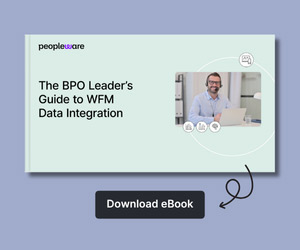There are a number of reasons outbound call campaigns are important to contact centres. Telemarketing/sales calls, customer service callbacks, marketing research or surveys are just a few of the types of outbound calls.
Depending on the location of your outbound contact centre and the complexities involved, the cost of your outbound call campaign could be sitting anywhere between $10 and $55 per hour, per agent, so you’ll be keen to ensure as high a return as possible on this investment.
The success of the campaign depends on many factors, but there are a few fundamental mistakes that can set your campaign up to fail.
Here, we take you through some of those common mistakes, most of which can be easily overcome by using contact centre number testing to carefully test your outbound calls.
Not Testing That Outbound Calls Are Connecting
Our 2021 Global Telecoms Quality of Service report showed that, in some countries in the world, almost 3% of calls fail to connect.
There can be many reasons for this – damage and failures in infrastructure, high traffic at busy times, issues with connections between carriers on your call routes…
Whatever the reason, if your outbound calls fail to connect, this will be wasting valuable agent time, and you’ll potentially cleanse contacts from your lists unnecessarily.
Avoiding failures like this often boils down to the carriers and routes you choose for your outbound calls. Cheapest is not always best in this scenario, as the service your provider and their partners are providing is crucial to your outbound calling campaign.
Using contact number testing to test your outbound calls can help here. Real test calls, placed to your outbound calling locations, can test connectivity and quality of calls (more on this below), allowing you to select the best routes at the start of your campaign.
Continued regular contact number testing throughout the campaign will then also give you early alerts to any failures, so routes can be continually optimized throughout and corrective action taken.
Not Enabling Caller ID
Once you’ve ensured that calls are connecting, the next fundamental mistake is to ensure that customers won’t actually answer your calls.
It’s been estimated that consumers will lose $40B to fraudulent robocalls globally in 2022, which goes some way to explaining why, apparently, 71% of consumers no longer answer their phones.
Taking it a step further, the Pew Research Center found that over 80% of Americans generally won’t answer a call from an ‘unknown’ number.
There may be little you can do about those that point-blank refuse to answer their phones, but you don’t need to remain an ‘unknown’.
By ensuring you have Caller ID enabled, with your company name and phone number displayed, you’ll be increasing the pool of people your agents actually get to speak to.
You’ll need to give thought (and possibly investment) into the number you choose to display. Research has shown that people are four times more likely to answer a call from a local number.
As an example, when Gallup implemented local-presence dialing for their telephone surveys, they saw a 13% to 24% improvement in call centre productivity.
Additional factors might include whether you want your customers to be able to call back to the direct line of a particular agent, to a team number, or to your main business number.
Not Testing Outbound Calls for Caller ID
So, once you’ve carefully thought through those choices, and invested in tools and local contact numbers, how do you know that it’s all working as it should?
Outbound call testing is essential to ensure that your calling line identification (CLI) is being relayed properly, throughout the entire path of your outbound calls.
There are a few reasons why this can commonly fail to happen: configuration errors, data being lost when your provider passes the call to another carrier downstream, and variations in how different countries handle CLI data, being a few of them.
Without testing your contact centre numbers regularly to check the caller ID for your outbound calls is displaying correctly at the other end, you won’t know when you’re unwittingly becoming an ‘unknown’ to your customers.
Not Testing Outbound Calls for Quality
Now your outbound call has connected and has been answered, are you testing its quality? Many contact centres are familiar with measuring and setting KPIs for quality with regard to the behavior of the agent making the call.
Did the agent follow the script as appropriate? Were they polite and courteous? Did they use empathy, tone of voice and listening skills to effectively build rapport? Did they close the call successfully?
The reality is, though, that, without adequate contact centre number testing, the agent may be working, effectively, with one hand tied behind their back.
If the voice quality on the call doesn’t allow for an easy conversation, it will be impossible for the agent to build rapport and close that outbound call.
Contact centre number testing that measures voice quality is essential for inbound calls to your contact centres, to ensure that the customer service experience is maintained.
But testing outbound calls for voice quality is perhaps even more important. After all, you are calling them. Why should they stay on the phone if they can’t hear adequately, or are constantly left asking the caller to repeat themselves?
You can avoid that mistake by using contact centre number testing to verify the voice quality experience at both ends of an outbound call, and give your agent a fighting chance of closing that call.
Author: Guest Author
Published On: 1st Aug 2022
Read more about - Guest Blogs, Spearline





































